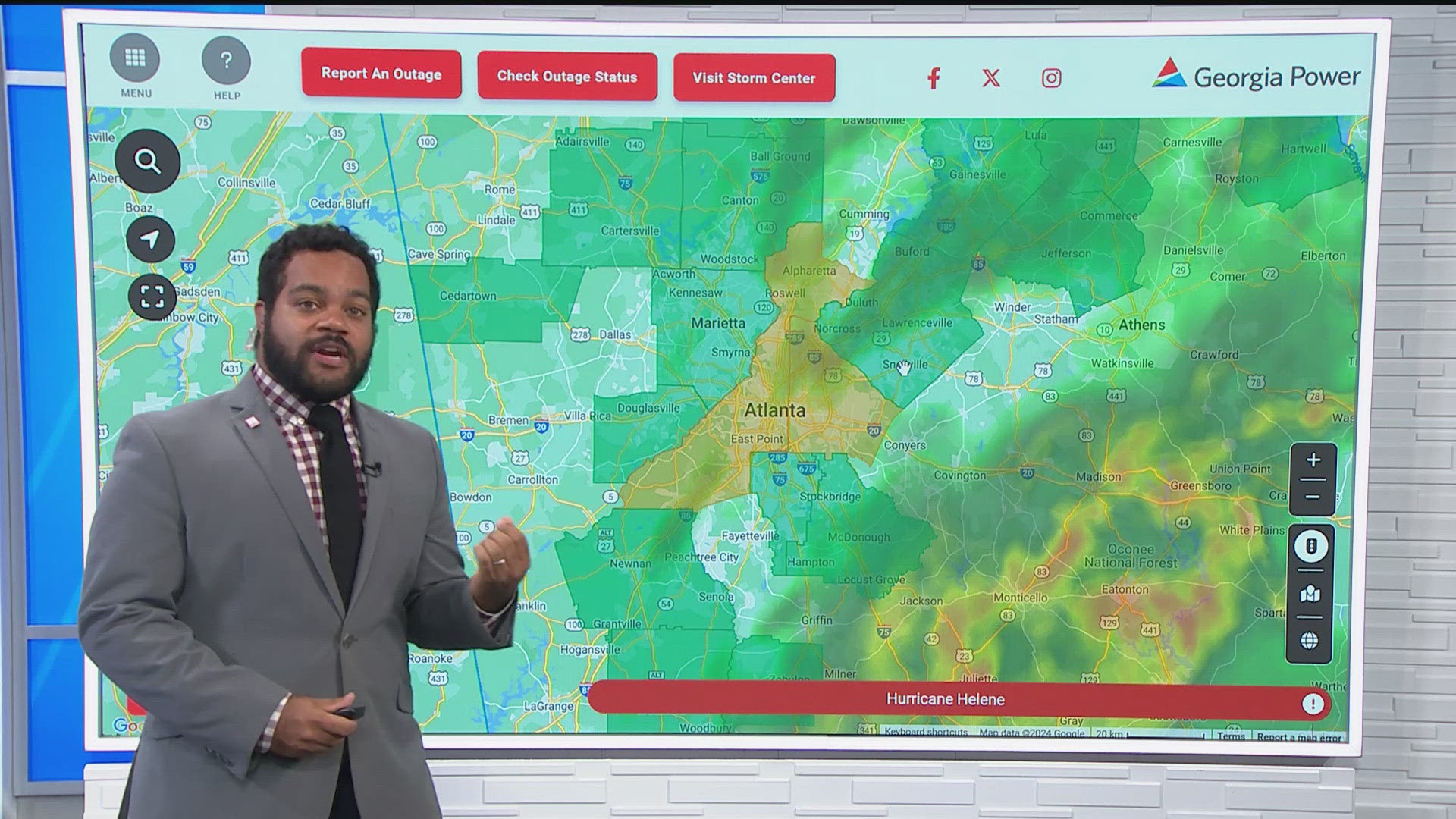ATLANTA — Hurricane Helene is set to make landfall late Thursday and impact Georgia overnight into Friday morning. Heavy wind and rain are expected, and power outages are anticipated, which can put your food at risk.
When a hurricane comes, one of the last things you want to worry about is if your food is safe to eat.
The U.S. Department of Agriculture’s Food Safety and Inspection Service (FSIS) issued food safety recommendations for those who may be impacted by a hurricane.
When power outages and flooding occur, food stored in refrigerators and pantries could be compromised.
FSIS recommends that you take the following steps to reduce food waste and the risk of foodborne illness if you are in the path of the storm.
Before losing power
- Keep appliance thermometers in both the refrigerator and the freezer to ensure temperatures remain food-safe during a power outage. Safe temperatures are 40°F or lower in the refrigerator and 0°F or lower in the freezer.
- Freeze water in one-quart plastic storage bags or small containers prior to a storm. These containers are small enough to fit around the food in the refrigerator and freezer to help keep food cold. Remember, water expands when it freezes, so don’t overfill the containers.
- Freeze refrigerated items, such as leftovers, milk and fresh meat and poultry, that you may not need immediately—this helps keep them at a safe temperature longer.
- Know where you can get dry ice or block ice.
- Have coolers on hand to keep refrigerator food cold if the power will be out for more than four hours.
- Group foods together in the freezer—this ‘igloo’ effect helps the food stay cold longer.
- Keep a few days’ worth of ready-to-eat foods that do not require cooking or cooling.
When the power goes out
- Keep the refrigerator and freezer doors closed as much as possible. A refrigerator will keep food cold for about four hours if the door is kept closed. A full freezer will hold its temperature for about 48 hours (24 hours if half-full).
- Place meat and poultry to one side of the freezer or on a tray to prevent cross contamination of thawing juices.
- Dry or block ice should be used to keep the refrigerator as cold as possible during an extended power outage. Fifty pounds of dry ice should keep a fully-stocked 18-cubic-feet freezer cold for two days.
Food safety after a flood
- Do not eat any food that may have come into contact with flood water—this would include raw fruits and vegetables, cartons of milk or eggs.
- Discard any food that is not in a waterproof container if there is any chance that it has come into contact with flood water. Food containers that are not waterproof include those packaged in plastic wrap or cardboard or those with screw‐caps, snap lids, pull tops and crimped caps. Flood waters can enter into any of these containers and contaminate the food inside. Also, discard cardboard juice/milk/baby formula boxes and home-canned foods if they have come in contact with flood water because they cannot be effectively cleaned and sanitized.
- Inspect canned foods and discard any food in damaged cans. Damage can be shown to cans by swelling, leakage, punctures, holes, fractures, extensive deep rusting or crushing/denting, which is severe enough to prevent normal stacking or opening with a manual, wheel‐type can opener.
After a weather emergency
- Check the temperature inside of your refrigerator and freezer. Discard any perishable food (such as meat, poultry, seafood, eggs or leftovers) that has been above 40°F for two hours or more.
- Check each item separately. Throw out any food that has an unusual odor, color or texture or feels warm to the touch.
- Check frozen food for ice crystals. The food in your freezer that partially or completely thawed may be safely refrozen if it still contains ice crystals or is 40°F or below.
- Never taste a food to decide if it’s safe.
- When in doubt, throw it out.

